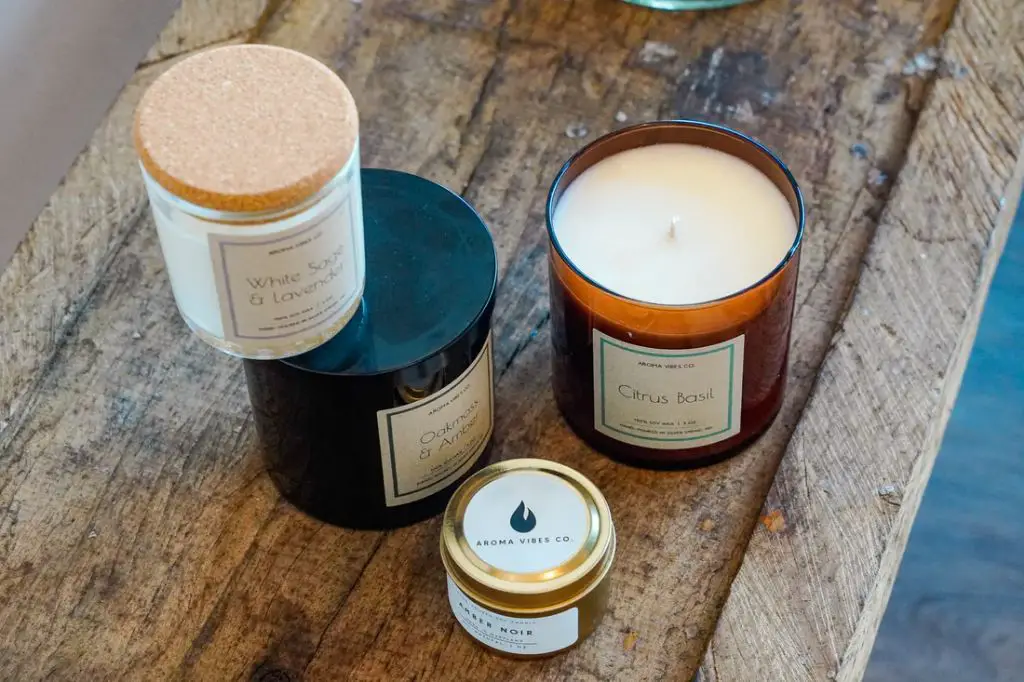Is Soy Wax In Candles Harmful?
Soy wax is a vegetable-based wax made from soybeans. It is commonly used to make candles, replacing paraffin wax which is a petroleum by-product. Soy wax was introduced into candle making in the 1990s as a renewable and environmentally friendly alternative to paraffin. It has become increasingly popular due to consumer demand for natural products.
Soy wax is made from hydrogenated soybean oil. The soybeans are cleaned, cracked, flattened, and extruded to extract the oil. The oil then goes through a hydrogenation process which helps harden the wax. This hydrogenated oil is what gives soy wax its smooth and creamy texture that is ideal for candles.
The use of soy wax in candle making has grown exponentially over the past decade. Crafters and major candle manufacturers alike have adopted soy wax for its natural scent and clean burn. The softer texture of soy wax allows for better fragrance adhesion than paraffin candles. Soy wax also releases fragrance evenly without retaining odor. Its low melting point makes soy an accessible wax for beginners to work with.
What is Soy Wax?
Soy wax is a vegetable wax made from the oil of soybeans. After harvesting, the beans are cleaned, cracked, de-hulled, and rolled into flakes (Source). The oil is extracted from these flakes and hydrogenated to produce a wax with properties suitable for candle making.
Soy wax is often used as an alternative to paraffin wax. While paraffin is a petroleum byproduct, soy wax comes from a renewable resource. Many candle makers and consumers prefer soy wax for this reason. Soy wax is also biodegradable.
In terms of properties, soy wax has a lower melting point compared to paraffin, between 115°F and 135°F. This means soy wax candles must be burned at lower temperatures to avoid tunneling. Soy wax allows for excellent fragrance retention and produces less soot. The burn time of soy candles is generally shorter than paraffin. With proper wick size and vessel shape, soy wax can provide a clean even burn (Source).
Benefits of Soy Wax
Soy wax offers several benefits that make it a popular choice for candle making. First, soy wax is environmentally friendly. It is made from soybeans, a renewable resource, whereas paraffin wax is made from petroleum which is non-renewable. Producing soy wax has less environmental impact than petroleum-based waxes.
Additionally, soy wax is a natural ingredient made from soybean oil, hydrogenated soybean oil, and other natural waxes. Many consumers prefer candles made with natural ingredients over synthetic ingredients.
Finally, soy wax offers customizable burn properties. By blending different soy waxes, manufacturers can create candles with a wide range of melting points, texture, and fragrance throw. This level of customization allows for fine-tuning the candle’s burn performance.
Potential Concerns with Soy Wax Candles
While soy wax candles are often marketed as a natural, non-toxic alternative to paraffin wax candles, there are some potential concerns to be aware of.

GMO Soybeans
Most soybeans grown in the United States are genetically modified (GMO) (source). There is ongoing debate about the safety of GMO crops. Some people prefer to avoid GMO ingredients whenever possible.
Allergies and Sensitivities
Soy wax comes from soybeans. People with soy allergies or sensitivities may react to the soy proteins in soy wax candles. The smoke released when burning soy candles could trigger allergy symptoms like coughing, sneezing, or skin irritation (source).
Those with asthma or respiratory issues should use caution with soy candles, as the soy proteins may exacerbate existing problems.
Soy Wax vs. Paraffin Wax
When comparing soy wax to paraffin wax, there are a few key differences to consider:
Burn time – Soy wax candles tend to have a longer burn time than paraffin candles. The dense molecular structure of soy wax allows it to liquefy more slowly as it burns, leading to a slower and longer burn. Studies show soy candles can burn 35-50% longer than paraffin.
Emissions – Paraffin wax releases harmful carcinogens and toxins like toluene and benzene when burned. Soy wax does not release these toxins, making it a cleaner burning wax. Soy wax emits lower amounts of soot as well.
Environmental impact – Soy wax is biodegradable and comes from a renewable resource, soybean oil. Paraffin wax is a petroleum byproduct. Soy wax has a smaller carbon footprint and is considered an eco-friendly alternative.
In summary, soy wax burns longer, emits fewer harmful toxins, and is more environmentally sustainable than paraffin wax. Many consumers choose soy for these advantages despite the typically higher cost over paraffin wax.
Making Soy Candles
Making soy candles is a relatively straightforward process, though it does require some special equipment and care. Here are some key instructions and tips for making high-quality soy candles at home:
https://www.candlescience.com/learning/how-to-make-a-soy-candle/
Equipment: You’ll need a double boiler, thermometer, pouring pot, molds or containers, wicks, and fragrance oils. Glass and metal equipment is recommended over plastic. Make sure your double boiler is large enough to melt the amount of wax you’ll be working with.
Melting the wax: Slowly melt the soy wax flakes in your double boiler, gently stirring until fully liquid. Heat the wax to 185-190°F. Going above 200°F may damage the wax. The wax should be completely melted and have a thin, smooth consistency before adding fragrance.
Adding fragrance: Once the wax is melted, you can stir in any essential oils or candle fragrance oils you wish to use. Fragrance oils are concentrated scents formulated for candle making. Use .5-1 ounce of fragrance oil per pound of wax. Stir thoroughly before pouring.
Preparing wicks: Wicks designed for soy wax perform the best. Use cotton or natural fiber wicks and trim to 1⁄4 inch length before inserting into molds or containers. Wicks should be centered before pouring in wax.
Pouring: Carefully pour the melted wax into each container, leaving room at the top for the wax to shrink slightly as it cools. Allow candles to fully harden undisturbed for at least 24 hours before trimming wicks or lighting.
Top Soy Wax Brands
There are several reputable brands of soy wax that are popular among candle makers:
- Golden Brands – Their “Golden” line of soy waxes like Golden 464 are top sellers. Available at most candle supply stores.
- NatureWax – A leading brand with waxes like C-3 and CB-135. NatureWax C-3 is a versatile option. Sold online and at craft stores.
- EcoSoya – Offers soy waxes like Q220 and CB Advanced. Known for excellent scent throw. Available online.
- IGI Waxes – Soy waxes like 6006 and 6030. Reputable for container candles. Can purchase online.
These soy wax brands can be purchased from online candle making supply shops like CandleScience.com and LoneStarCandleSupply.com. Local craft stores may also carry options like Golden Brands or NatureWax.
Soy Candle Safety
When burning soy candles, it’s important to follow proper safety precautions. Here are some tips for safe soy candle burning:
Always keep the candle away from flammable objects and out of reach of children and pets. Place the candle on a stable, heat-resistant surface. According to Tipsy Candle Company, “Never leave a burning candle unattended” (https://tipsycandlecompany.com/tipsy-tips-safety/).
Allow the candle to burn for 2-3 hours the first time to allow the wax to melt evenly. This helps avoid tunneling where the center burns faster than the edges. Per Unplug Soy Candles, “Always burn candles in a well-ventilated room” (https://www.unplugsoycandles.com/pages/soy-candle-care).
Watch for warning signs like soot buildup, mushrooming wicks, fluttering flames, or cracking sounds which can indicate unsafe burning conditions. Trim wicks to 1⁄4 inch before lighting to prevent excess smoking. Extinguish candles if they get dangerously low.
Never move or touch a burning candle when wax is liquid. Don’t place candles near drafts or ventilation. Allow the wax to completely harden before relighting a candle. Adhering to proper soy candle safety can help avoid fires or other accidents.
Frequently Asked Questions
When switching to soy wax candles, many people have common questions about using this natural alternative to paraffin wax. Here are answers to some of the most frequently asked questions about soy wax candles:
Is soy wax toxic?
No, soy wax is not toxic. It is made from soybeans, a food crop, and does not contain any toxic chemicals. Soy wax has been designated as non-toxic by the FDA. This makes it a safer option compared to paraffin wax, which can emit harmful fumes when burned (1).
Does soy wax produce soot?
Very little. One of the advantages of soy wax is that it burns cleanly without producing much soot or smoke. Paraffin wax tends to create more soot as it burns, leading to black residue on walls and ceilings over time. The low-soot quality of soy wax makes it ideal for clean indoor burning (2).
How well do soy candles hold scent?
Soy wax has excellent scent retention or “scent throw” properties. The natural soy wax allows fragrance oils to fully absorb and slowly release aroma when burned. Soy candles tend to fill a room with fragrance better than paraffin alternatives.
Do soy candles last as long as regular candles?
Yes, soy wax candles have excellent burn times, comparable to paraffin. An average soy wax candle will burn for 6-8 hours per ounce of wax. With proper wick size, soy candles can burn just as long and slow as regular candles.
Are soy candles more expensive?
Soy wax is generally more expensive than paraffin wax, so soy candles tend to be a bit pricier. However, many find the extra cost worth it for the natural, non-toxic formula and excellent performance. Prices vary among soy candle brands.
Conclusion
In summary, soy wax is generally considered a safe, environmentally-friendly alternative to paraffin wax for candle making. The key benefits of soy wax include:
- Made from a renewable resource (soybeans)
- Biodegradable and compostable
- Cleaner burning with less soot
- Naturally slower burning
- Harder consistency than paraffin wax
While there were initial concerns about soy wax containing toxins or allergens, research has shown soy wax candles do not pose any serious health risks. Any potential allergens are destroyed in the candle making process. The soy wax itself does not contain protein or potential allergens.
The verdict is that soy wax is generally safe for candle making and does not have harmful effects from burning or scent dispersion. It continues to grow in popularity as an eco-friendly alternative to paraffin. With proper wick size and candle care, soy candles can provide an excellent candle-burning experience.





